The Churches of Jesus Ministry in the Galilee
The Christian gospels tell us that Jesus spent 3-6 years (27/29 AD – 30/36 AD) preaching in the Galilee, during his ministry in the Galilee he met and recruited his disciples and traveled around the countryside preaching as well as performing several miracles. His Galilee ministry began with his baptism at the site now known as Yardenit. Today several churches mark the significant sites where biblical events occurred in the Galilee.
The Greek Orthodox Church of the Marriage Feast, Cana, Israel. Photo credit: © Shutterstock
The Church of the House of St Peter, Capernaum
Today the Church of St. Peter is a modern structure located within the Kfar Nahum National Park. The modern church has been built on the site of St. Peter’s house but raised above archaeological findings. Visitors can peer down through a glass-covered opening in the center of the church and see the excavated house of St. Peter as well as a later 5th-century octagonal Byzantine church. In the tradition of earlier churches, the modern Church of St Peter is also octagonal. Within the structure are motifs of the Sea of Galilee and biblical scenes from Saint Peter’s life.
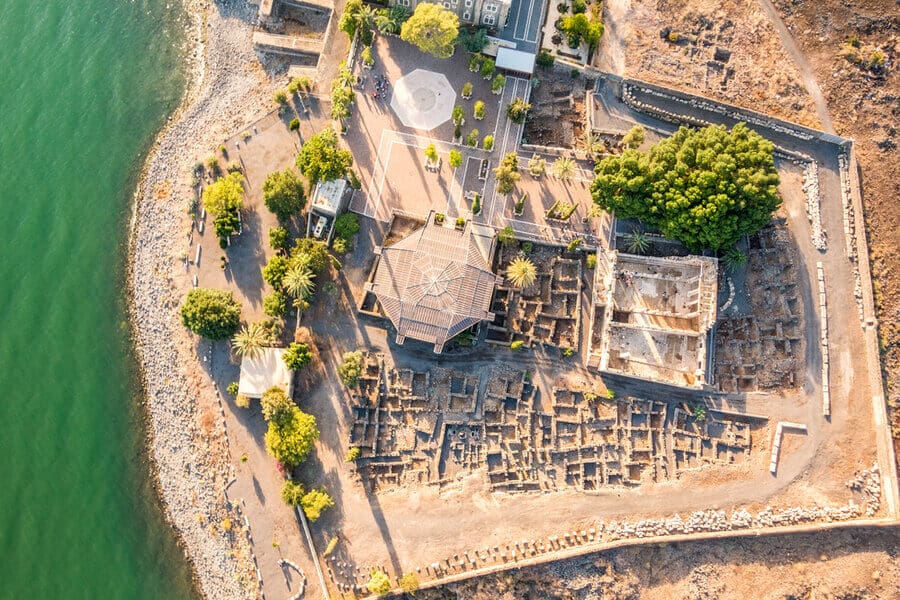
Aerial view of Capernaum, Town of Jesus, Galilee, Israel. Photo credit: © Shutterstock
Church of the Apostles, Capernaum
The Greek Orthodox Church of the Apostles is located on the southeastern edge of what would have been the Roman village of Capernaum; the church is dedicated to the seven apostles named in the Gospel of John. The church was completed in 1931 on the site where the village of Capernaum was relocated following an earthquake in 746 AD. The picturesque church has a white exterior with bright red onion domes. Within the church, almost every surface is covered with intricate and colorful murals.
Church of the Beatitudes
Located on the Mount of Beatitudes above Capernaum overlooking the Sea of Galilee is the Mount of Beatitudes where Jesus gave his sermon on the mount which contains some of the pivotal teachings in Christianity. The sermon contained the 10 blessings that begin “Blessed are…” as well as the Lord’s Prayer. To mark the site where Jesus gave his longest teaching of Christian principles is the Franciscan Church of the Beatitudes.
The church was designed by renowned Italian architect Antonio Barluzzi and constructed in 1938. The church is set in a tranquil garden and the exterior has a covered arcade supported by columns separated by arched openings. The roof of the church has a single central dome. Within the church are stained glass windows featuring the beatitudes and gold mosaics in the dome. The church has an octagonal shape to symbolize the 8 beatitudes (Matthew 5:3-11). The church has been visited by Pope Paul VI and Pope John Paul II.
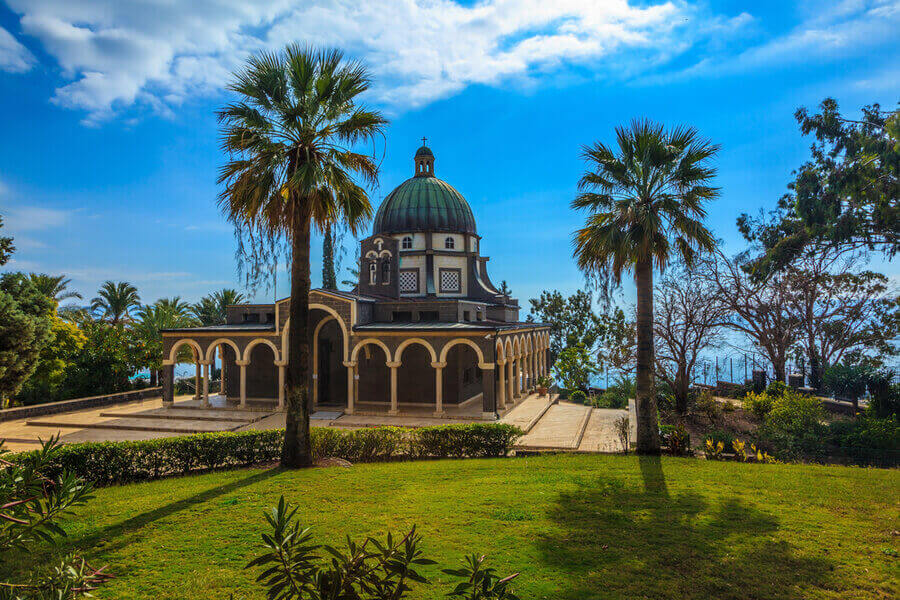
Church of the Beatitudes. Photo credit: © Shutterstock
Church of the Multiplication of the Loaves and Fishes, Tabgha
Tabgha is believed to have been the site of the first feeding when Jesus performed the miracle of sharing 5 loaves of bread and 2 fish with 5,000 people who had come to hear him. The Roman Catholic Church is a modern structure constructed on the site of two earlier churches.
Elements of the earlier churches have been preserved including a 5th-century floor mosaic in the two transepts featuring plants, animals, and a lotus flower. Near the altar is a mosaic of two fish and a basket of bread. During excavations a limestone slab of rock was found, this now lies under the altar and is thought to have been the table where Jesus shared out the miraculous meal.
Church of the Primacy of Peter, Tabgha
This modern Franciscan chapel built in 1933 marks the site where Jesus ate with his disciples following his resurrection and also where Jesus reinstated St. Peter who had denied knowing Jesus three times at Jesus’ crucifixion. It is the signature event of Jesus appointing Peter to look over his church that led to the Pope (a successor of Peter) being the leader of the Christian world (John 21:15-19).
The church is located on the water’s edge of the Sea of Galilee, there are even stone steps going down to the water. The steps were carved out of the rock c.2nd century. On the water’s edge at the base of the steps are 12 heart-shaped blocks called the Twelve Thrones dedicated to the 12 Apostles. At high tide, the block columns are submerged beneath the water.
The church holds the Mensa Christi or the table where Jesus and his disciples ate. Earlier churches that stood on this site have been incorporated into the more recent structure. Remains of the walls of a 4th-century church are visible in the grey stone structure.
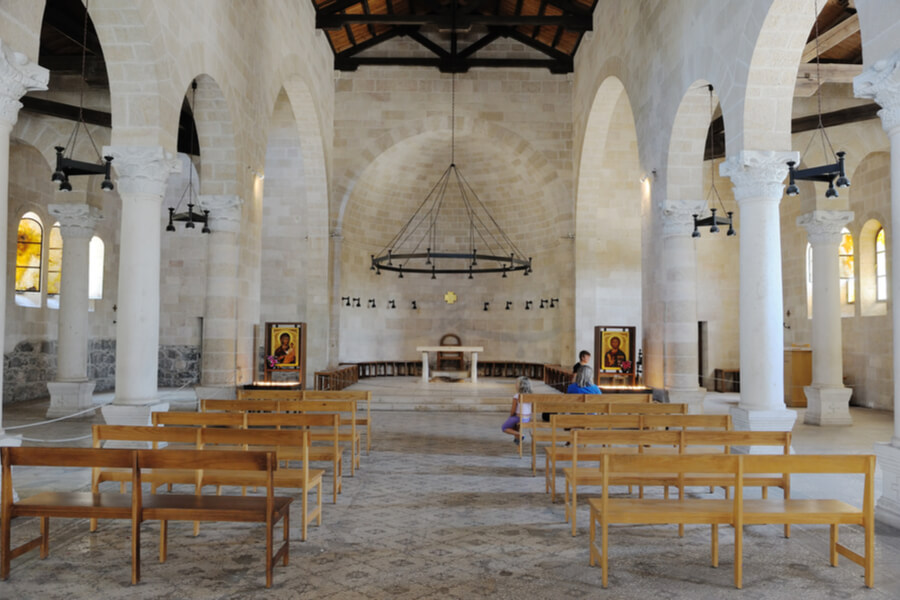
Inside the Church of the Multiplication, near the sea of Galilee, Israel. Photo credit: © Shutterstock
Cana Franciscan Wedding Church, Kfar Cana
Unlike the churches mentioned above which all lie on the western shore of the Sea of Galilee, this church is in the Lower Galilee between the Sea of Galilee and Nazareth. It was here that Jesus performed his first miracle turning water into wine at a wedding celebration (John 2:1-11).
The site of this miracle is marked with a church. It is a Franciscan Catholic church constructed from 1879 to 1883 over the ruins of a 6th-century church and also has a 4th-century mosaic floor with Aramaic inscriptions.
The baroque-style church has twin bell towers, and a façade topped with angel statues. There is an arcaded narthex and a pleasant front courtyard. The interior has two levels with a dome above the upper church and a nave on the lower level where you can see part of a Byzantine mosaic. On the lower level is a chapel and museum with artifacts found during the construction.
Church of St. George, Kfar Cana
Next to the Marriage Church is a Greek Orthodox Church built in 1886, the church holds two of the six jars believed to have been used in the miracle of the wine. Outside the church is a courtyard with palm trees, bells, gazebos, and fountains but the interior is usually closed to tourists.
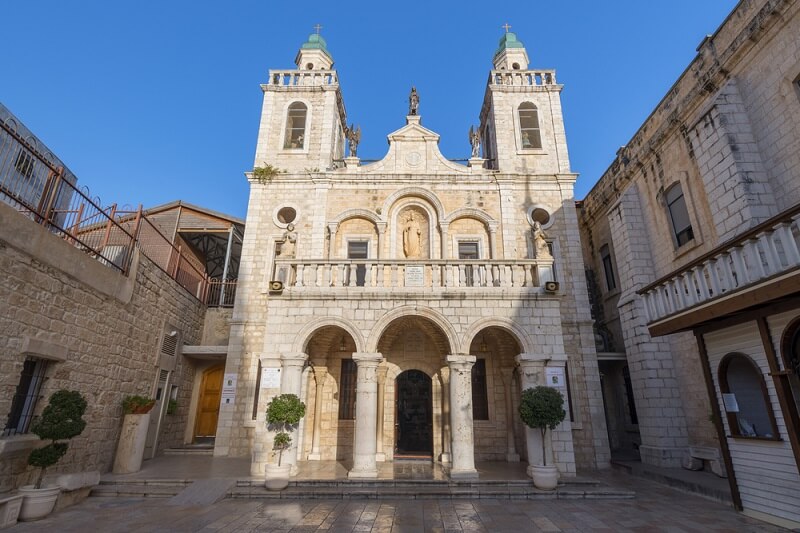
Franciscan Wedding Church, Cana. Photo credit: © Shutterstock
 Login / Register
Login / Register
 Contact Us
Contact Us
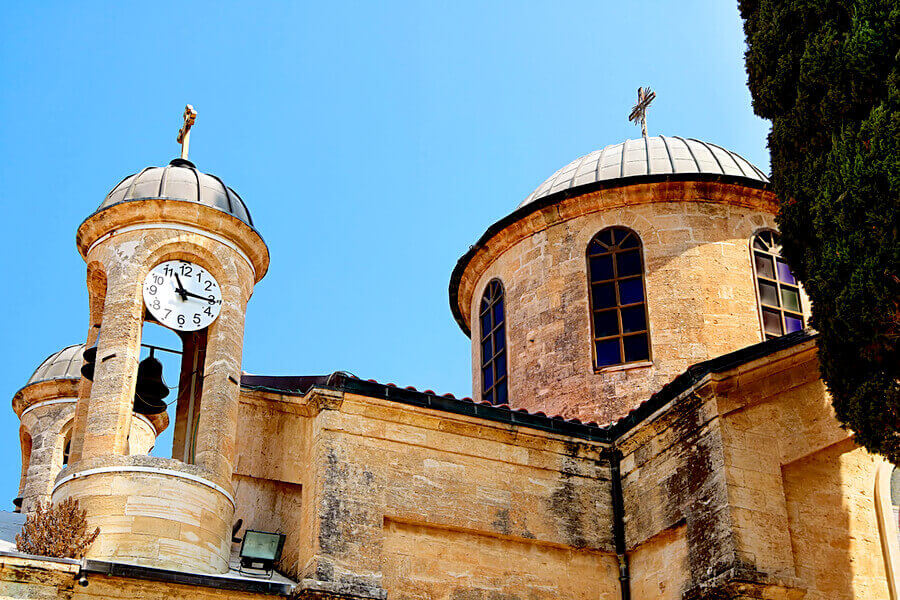
 Certificate of Excellence
Certificate of Excellence Guaranteed Departure
Guaranteed Departure Low Prices Guaranteed
Low Prices Guaranteed 24/7 Support
24/7 Support




